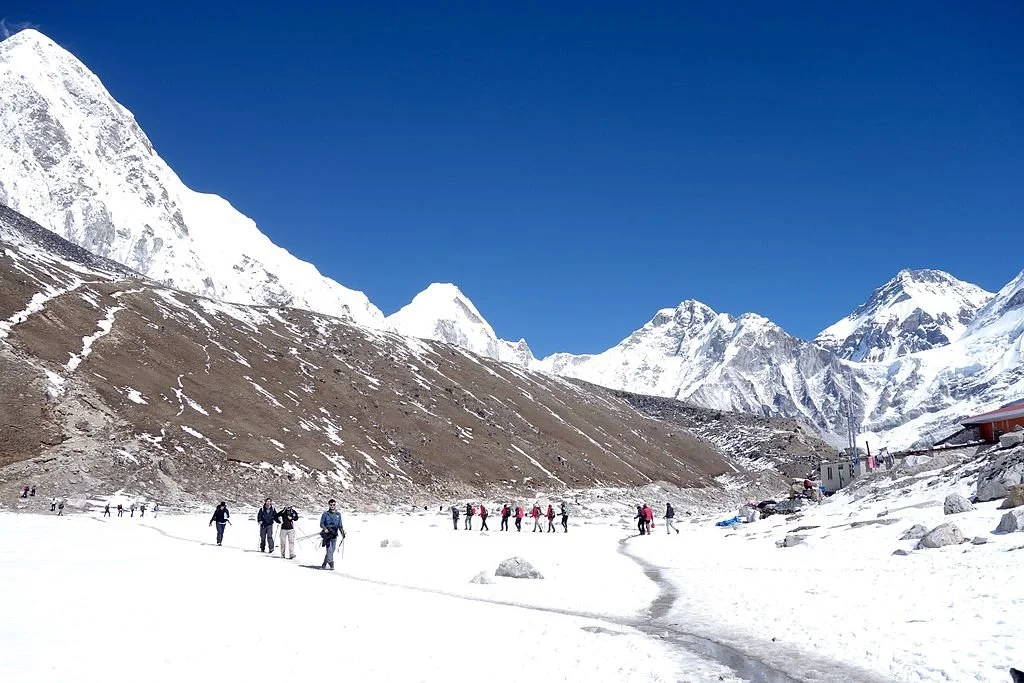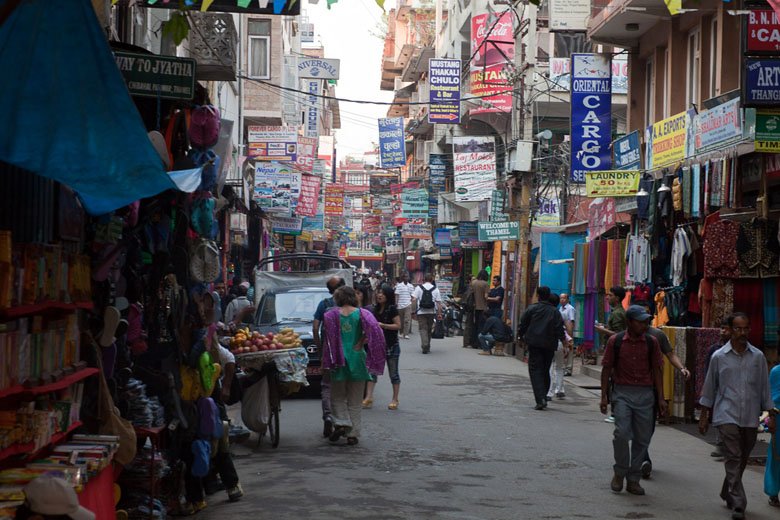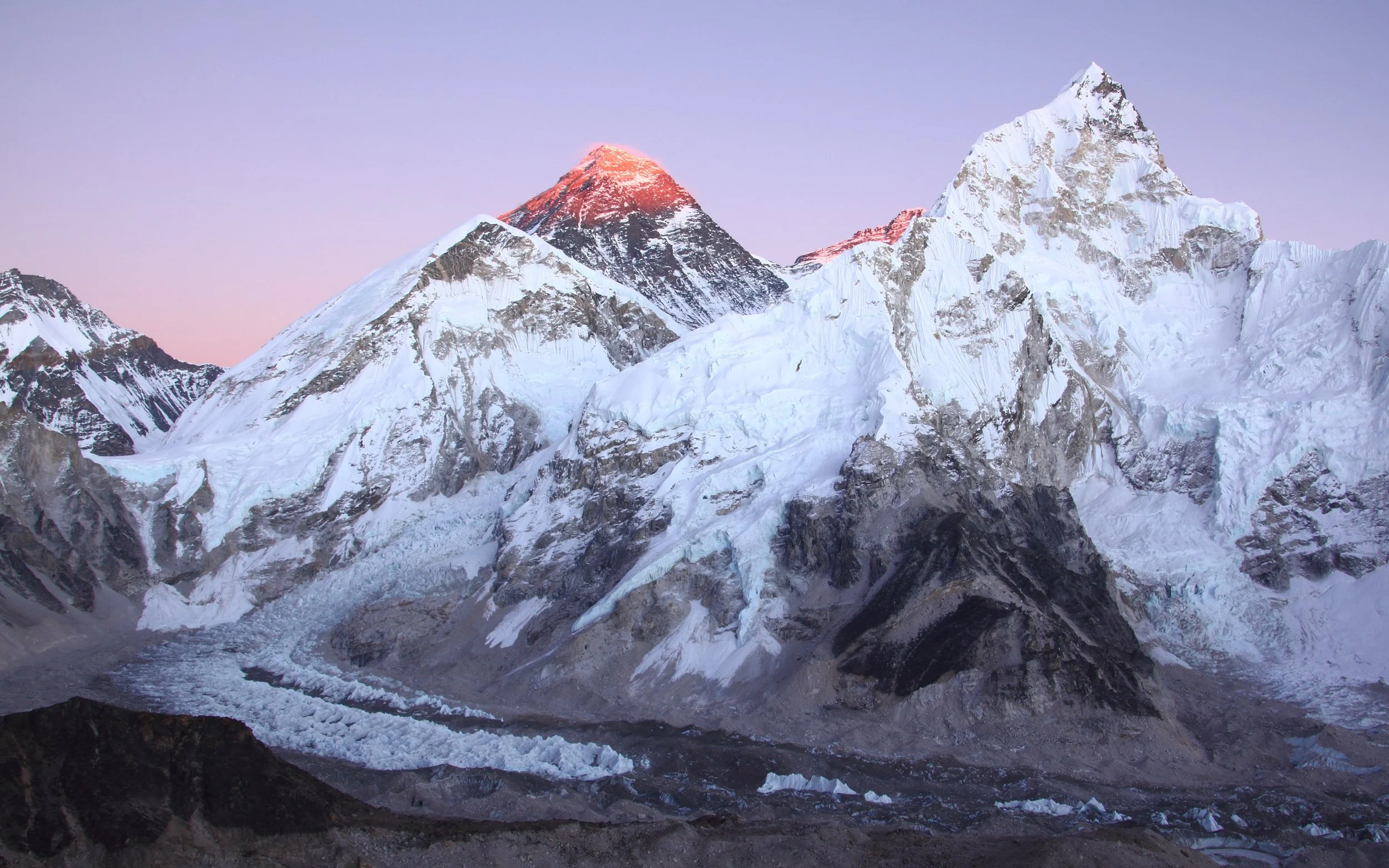A thrilling Himalayan adventure can be within your reach. Here’s how to save money by staying and eating at teahouses, renting equipment, joining a group tour and other little-known tips from a local expert.
A trek to the Everest Base Camp doesn’t have to break the bank! A local tour operator offers his money-saving tips.
Undertaking the legendary Everest base camp trek is a dream shared by many adventure enthusiasts around the world. The appeal of standing at the base of the world’s highest mountain, surrounded by awe-inspiring Himalayan landscapes and experiencing Sherpa culture, is a truly once-in-a-lifetime trip.
Take the time to meet some Sherpas and learn some of their customs.
While it may seem like an expensive undertaking, as a co-founder of a local tour operator, I’m here to reveal budget-friendly tips and insights that will make your Everest base camp trek an affordable reality. Get ready to immerse yourself in the breathtaking beauty of the Himalayas…without worrying much about breaking the bank.
The backside of Ama Dablam with its gorgeous turquoise lake
Planning and Preparation for an Affordable Everest Base Camp Trek
Here are some key points to consider:
Go in the low seasons.
Planning for the trek during the off-peak seasons (December to February and June to August) can significantly reduce the overall cost. Not only will you avoid the peak tourist flow on the trail, but you may also find discounted lodges and domestic and international flights.
Share the cost of a tour by joining a group.
Take a group tour.
While independent trekking can be convenient and offer personal support from a guide and porter, joining a group is more cost-effective — you’ll be sharing the charges to hire a guide and porters.
There are opportunities to rent or borrow gear if you don’t want to make the investment.
Rent or borrow trekking gear.
Make a detailed list of essential items, such as sleeping bags, trekking poles, hiking boots and waterproof jackets. Look for gear rental shops in Thamel or consider borrowing equipment from fellow trekkers. You also might be able to borrow items like a sleeping bag or down jacket from some of the major Kathmandu-based tour operators.
The sprawl of Kathmandu. You can bus to Salleri, the jumping-off point for the trek, which is cheaper than flying.
Take the bus.
A public bus or shared jeep from Kathmandu to Salleri may be a longer journey, but it’s a cheaper alternative to flying to and from Lukla.
Budget-Friendly Accommodations Along the Everest Base Camp Route
Getting affordable accommodation is entirely possible with following tips:
The teahouse lodges are much more affordable than their luxury counterparts.
Stay in teahouse lodges.
Along the trail, there are numerous teahouse lodges that offer basic accommodation and meals. These no-frills lodges are more budget-friendly compared to luxury lodges like Yeti Mountain Home. Embrace the simplicity and warmth of teahouse stays, which also provide an opportunity to connect with other like-minded trekkers.
Share a room.
To further minimize trip costs, consider sharing rooms with other trekkers. Many teahouses offer twin and triple sharing rooms, allowing you to split the bill.
Colorful Namache Bazaar is built into the side of a hill and is home to most of the Sherpas in the travel biz.
Shoot for lower-altitude villages.
As you go higher, the cost of teahouse stays tend to increase. Choosing to stay more in lower-altitude villages, such as Namche Bazaar and Tengboche, can help save money and, at the same time, help you acclimatize to the altitude.
Everest Trek Food on a Budget
These handy tips on food options will help cut down costs of an Everest trek:
Teahouses serve dhal bhat, a traditional Nepalese dish — and it’s often all-you-can-eat.
Eat at teahouses.
Go for local cuisine and enjoy the traditional dhal bhat (rice and lentil soup) offered in all teahouses. The meal provides a hearty — and affordable — source of energy. And you can get refills at no additional cost.
When you’re in Kathmandu, make sure to get a bunch of snacks to take with you.
Pack snacks.
Stock up on energy bars, nuts and dried fruit in Kathmandu to avoid higher-cost options along the trail. These snacks are really helpful to quickly and cost-effectively boost your energy on the trail.
The sunset over Kala Patthar is a highlight of the excursion.
Permits for an Everest Base Camp Trek
Navigating the permit process and organizing trip logistics can be overwhelming. But the good news is they’re not too expensive. Here’s what you need to know:
TIMS Card
Cost: 2000 Nepalese rupees (about $15)
The Trekkers’ Information Management System card (commonly known as a TIMS card) is a necessary permit for Everest base camp trek. Get the card in Kathmandu by visiting the Nepal Tourism Board or the office of the Trekking Agencies Association of Nepal.
Sagarmatha National Park Permit
Cost: NPR 3000 (about $23)
You must get a pass for Sagarmatha National Park to complete an Everest base camp trek. Obtain an SNP permit in Kathmandu, or you can get one on the trail.
Khumbu Gau Palika Card
Cost: NPR 2000 (about $15)
Another essential permit you need to enter the trail is the Khumbu Gau Palika Card. You can also obtain one on the trail. However, fill out the form in advance and keep the submission number for quick processing. Follow this link to register for the permit.
A trek to the Everest Base Camp may be a priceless spiritual experience — but it doesn’t have to cost a fortune.
Everest Base Camp on a Budget
Planning for a budget-friendly Everest base camp trek allows you to experience the beauty of the Himalayas without worrying too much about your budget. By carefully planning your trek, choosing teahouses, eating local cuisine, and managing permits and logistics competently, you can make your dream of a Mount Everest base camp trek a reality. Get ready for breathtaking landscapes, meet Sherpas, experience their culture and experience unforgettable memories on a Himalayan adventure.
An Everest base camp trek is an exciting journey of self discovery, and with the right approach, it can be both affordable and life-changing. So, tie up your hiking boots, pack your backpack, and prepare for an impressive Himalayan adventure without the hefty cost. –Madhav Prasad
Madhav is the tour coordinator and co-founder of Mosaic Adventure in Kathmandu.
































